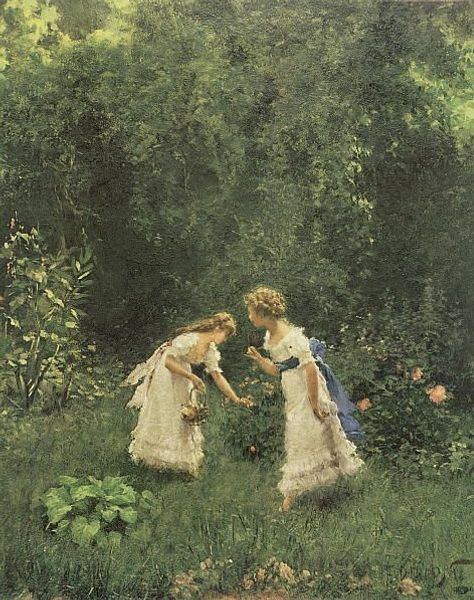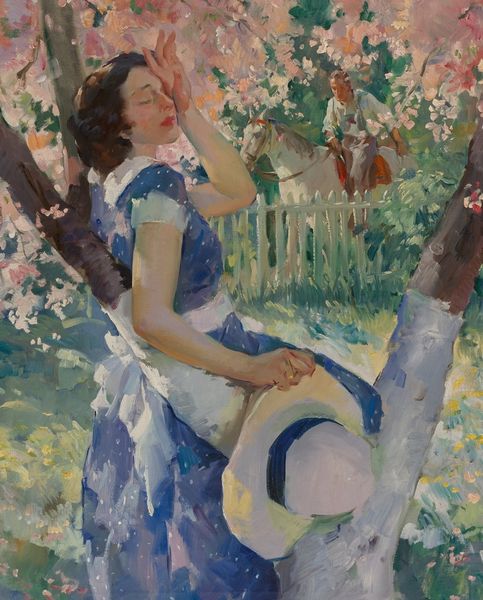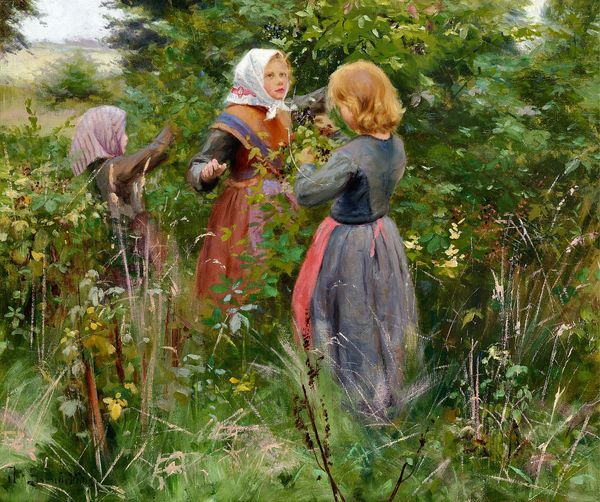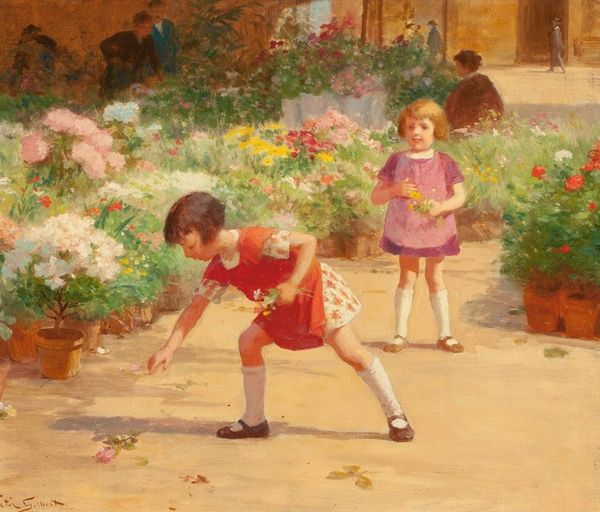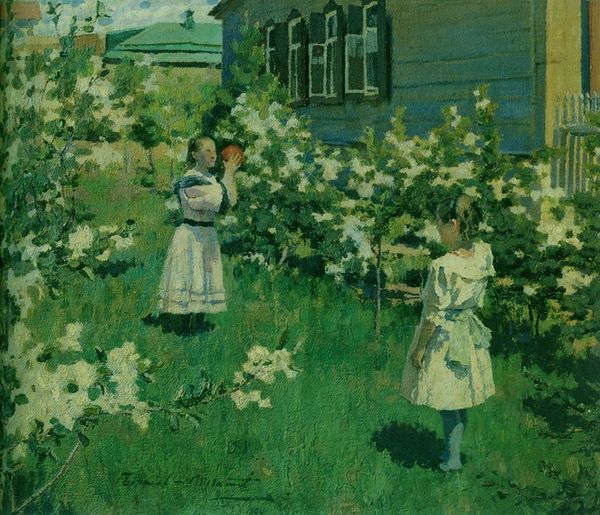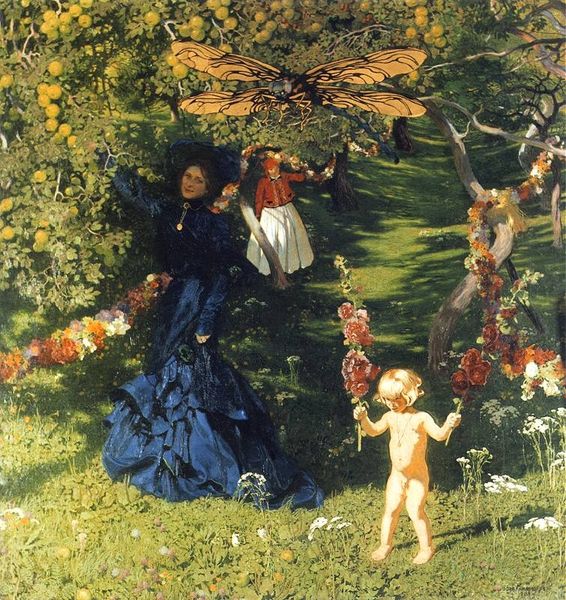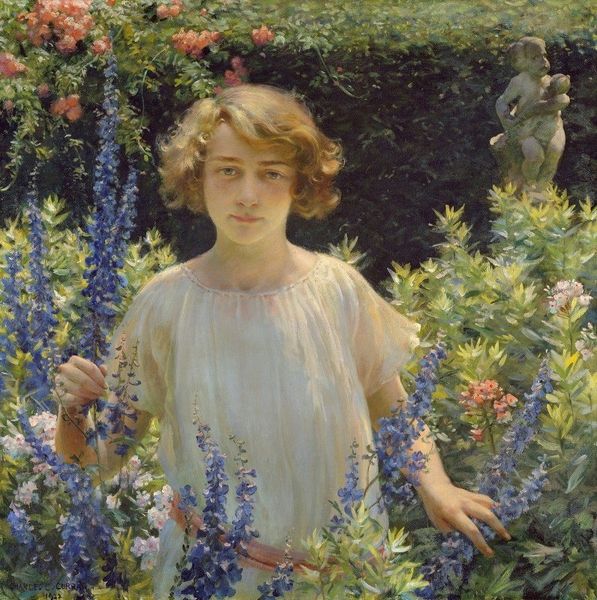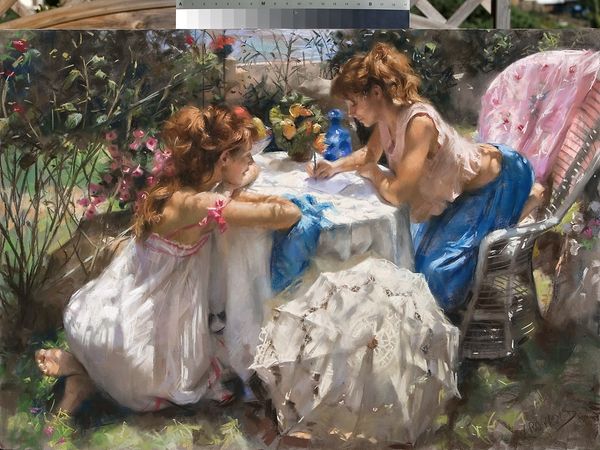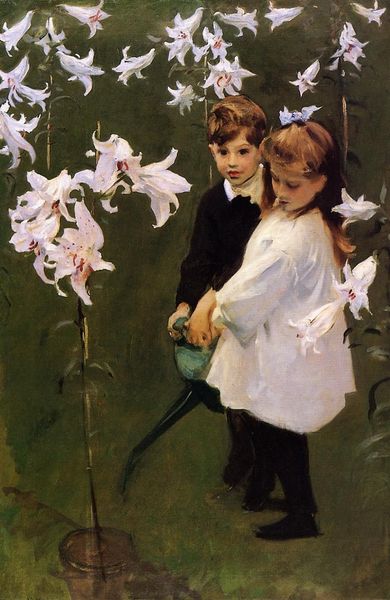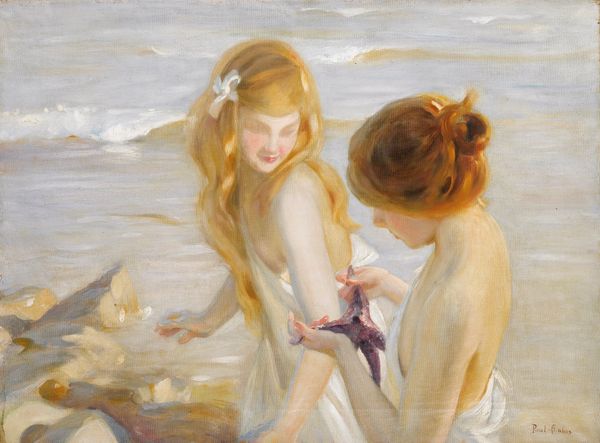
painting, oil-paint
#
portrait
#
gouache
#
impressionist
#
figurative
#
painting
#
impressionism
#
oil-paint
#
landscape
#
figuration
#
painting art
#
genre-painting
Copyright: Public Domain: Artvee
Editor: Here we have John Singer Sargent's "Carnation, Lily, Lily, Rose" painted in 1885 using oil paint. I am struck by how the glow of the lanterns contrasts with the dimming twilight. It creates such a charming atmosphere. How do you interpret this painting? Curator: It is indeed charming, but also telling. I see a very deliberate construction of girlhood on display, framed within the aesthetics of Impressionism. Consider the social expectations placed upon young girls in the late 19th century – ideals of purity, innocence, and domesticity. The garden becomes a liminal space, where the boundaries of nature and culture blur. What does the choice of white dresses and glowing lanterns signify to you in relation to these ideas? Editor: I guess the white dresses could symbolize innocence, and the lanterns represent enlightenment, maybe? But isn't it a little romanticized? Curator: Absolutely, and this is where it gets interesting. The romanticization, or rather idealization, becomes a strategy. Sargent wasn’t just painting a pretty picture; he was navigating the complexities of representation and social status. Think about the subjects - these are the daughters of prominent figures. The painting functions as a record of a particular social milieu. Editor: So you're saying it's not just about beauty, but also about social commentary? Curator: Precisely! Sargent’s "Carnation, Lily, Lily, Rose," prompts us to critically examine the power dynamics inherent in portraiture, particularly regarding the portrayal of women and girls within a specific historical and social context. By questioning the artist's choices and the broader cultural landscape, we reveal the ideologies embedded within seemingly innocent scenes. What does this piece make *you* think about girlhood, seeing it today? Editor: I see it now. It’s more than just a pretty picture of two children with lanterns. It is a reflection of social and gender norms during that era. I never would have seen it that way! Curator: That's the exciting thing about art - it opens avenues for critical dialogue about the world around us!
Comments
No comments
Be the first to comment and join the conversation on the ultimate creative platform.


